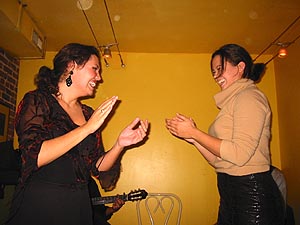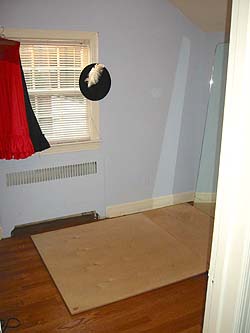
|
|
DC flamenco according to Tony (Thursday November 29, 2001) As far I know, Tony Brown, 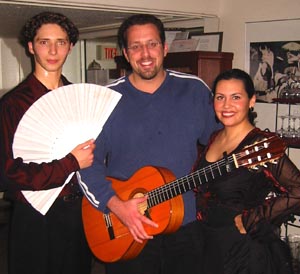 does not play the guitar, but he most certainly is an artist when it comes
to photography.
does not play the guitar, but he most certainly is an artist when it comes
to photography.
He's pictured here with dancers Aleksey Kulikov and Micaela Moreno last night at Las Tapas in Old Town Alexandria.
Tony has been hanging out with DC flamencos for the past year and has been showing us a side of ourselves we may have never seen before. Take a look. If you're not sure of your answer, you might want to read these articles:
For information about classes in copyright basics for artists visit the Washington Area Lawyers for the Arts website. If you have any comments, please post them on the message board. Jaleo by Annette
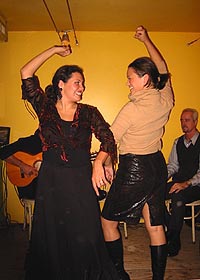 (Tuesday November 20, 2001)
When I was studying to become
a classical guitarist years ago, I of course enjoyed sharing my interpretations
from the classical guitar repertoire. Occasionally I still do. After
I finished playing a classical solo, I received some genuine applause...and
some just for the sake of being polite. You can't please everyone.
(Tuesday November 20, 2001)
When I was studying to become
a classical guitarist years ago, I of course enjoyed sharing my interpretations
from the classical guitar repertoire. Occasionally I still do. After
I finished playing a classical solo, I received some genuine applause...and
some just for the sake of being polite. You can't please everyone.
Nowadays, what I love about performing in an ensemble, especially in flamenco, is the interaction with the dancers and singers and the immediate response during the show from the audience in the form of jaleo (shouts of encouragement such as "ˇOlé!"). Pictured above are Micaela Moreno and Annette dancing Sevillanas. (Photos courtesy of Diana Puentes) Of course, they teach you some jaleo in flamenco dance schools.
But I'd love to find out where Annette learned to give jaleo because
she does it very well! The next time you go to a local flamenco show and you hear some
especially good jaleo in audience. Look around, there's a good chance
you'll see Annette and her friends. Thanks ladies! 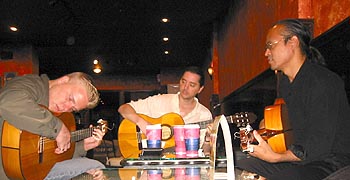 I know this sounds obvious, but it's something that many beginning flamenco guitar students sometimes understandably forget as they simultaneously think about right and left hand position, technique, tone etc. A lot of students understandably get caught up in the excitement of playing with dancers (and singers) and lose the compás. Playing solo is one skill and playing in a group is another. And the best way to learn is by doing it. Pictured above are my guitarist friends Michael Long and Steve Svoboda at Caffeine (703-534-8890). That's yours truly on the right. As a classical guitar soloist I was accustomed to sometimes slightly slowing down difficult parts in classical guitar pieces to accomodate my technical weaknesses. You can almost get away with it as a soloist. But don't try doing that with flamenco dancers (or singers). I don't care if you're trying to play a really cool but difficult falseta (melodic phrase). If you slow down the tempo to play a difficult falseta, you're out of compás. So now you ask, "How am I ever going to learn to play falsetas at performance tempo?" I say go for it. The important thing is that if you do make a mistake, and a few beats go by, jump back into the music not where you left off, but where the beat is NOW. These tips (which also apply to dancers) are more clearly explained
in this Flamenco FAQ
for classical guitarists. I know we all lead busy lives, but when it comes time to practicing, you need to be focused. And one of the best ways to accomplish this is to create a private practice space. It can be as simple as piece of wood in the living room. Or if you're fortunate to have a spare room in your home, you can create something extra special. Local flamenco dance student Kyoko was kind enough to allow me to take a peek at her personal home studio. |
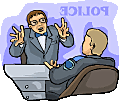
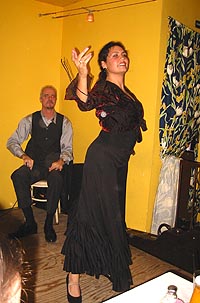 Last night at Cafe
Citrón (202-530-8844), we had cante by Gerárd Moreno, baile
by Micaela Moreno and toque by yours truly. But we were especially
"pumped up" thanks to the jaleo of Annette Hertwig, Diana
Puentes and Marcela. It added so much the performance and
more importantly to the flamenco experience.
Last night at Cafe
Citrón (202-530-8844), we had cante by Gerárd Moreno, baile
by Micaela Moreno and toque by yours truly. But we were especially
"pumped up" thanks to the jaleo of Annette Hertwig, Diana
Puentes and Marcela. It added so much the performance and
more importantly to the flamenco experience.
